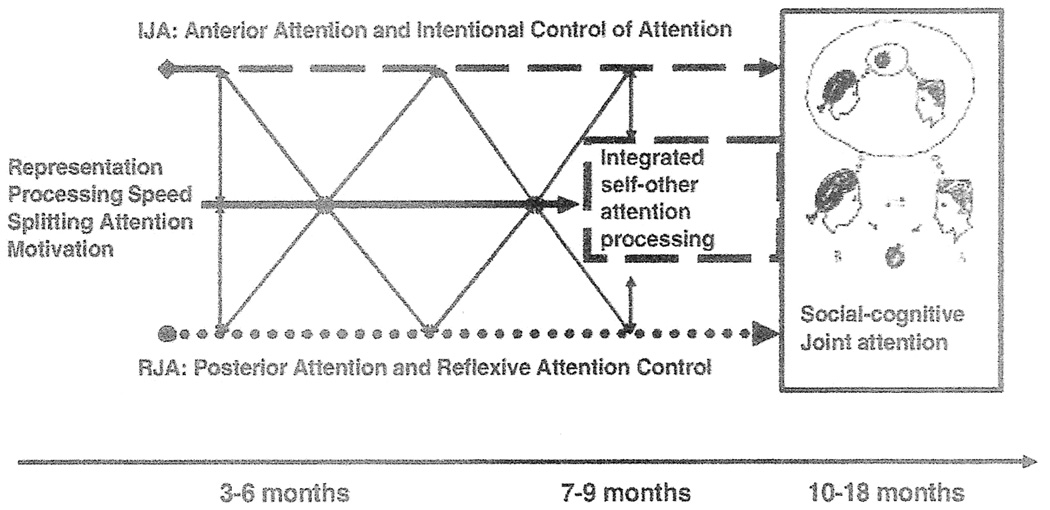Figure 5.
An illustration of the distributed information processing system model of joint attention and social cognition, from Mundy & Newell (2007). In this model, different types of lines depict the multiple paths of joint attention development from. The posterior attention system path associated with RJA development is illustrated with a dotted line  and the anterior attention system path associated with IJA development is illustrated with a dashed line
and the anterior attention system path associated with IJA development is illustrated with a dashed line  . The central solid line in the figure depicts the developments of other processes during infancy that influence joint attention development such as representational ability, speed of processing, motivation and the executive attention control, as well as each other during infancy. The diagonal arrows connect all paths throughout early development. This reflects the dynamic and coactive nature of joint attention development whereby the maturation of attention, cognitive and affective systems interact in reciprocal cause and effect relations with experience, including the experiences children create for themselves through their own actions. Finally, the development of integrated self and other attention processing is considered to be a social attention executive function of the anterior system that emerges in the 4 to 9 months period. This is represented by the
. The central solid line in the figure depicts the developments of other processes during infancy that influence joint attention development such as representational ability, speed of processing, motivation and the executive attention control, as well as each other during infancy. The diagonal arrows connect all paths throughout early development. This reflects the dynamic and coactive nature of joint attention development whereby the maturation of attention, cognitive and affective systems interact in reciprocal cause and effect relations with experience, including the experiences children create for themselves through their own actions. Finally, the development of integrated self and other attention processing is considered to be a social attention executive function of the anterior system that emerges in the 4 to 9 months period. This is represented by the  box. The capacity to integrate and share overt aspects of attention provides a foundation for the ability to share covert aspects of attention, such as representations, and social cognition.
box. The capacity to integrate and share overt aspects of attention provides a foundation for the ability to share covert aspects of attention, such as representations, and social cognition.

